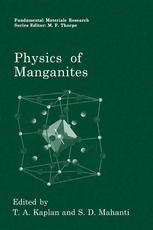

Most ebook files are in PDF format, so you can easily read them using various software such as Foxit Reader or directly on the Google Chrome browser.
Some ebook files are released by publishers in other formats such as .awz, .mobi, .epub, .fb2, etc. You may need to install specific software to read these formats on mobile/PC, such as Calibre.
Please read the tutorial at this link: https://ebookbell.com/faq
We offer FREE conversion to the popular formats you request; however, this may take some time. Therefore, right after payment, please email us, and we will try to provide the service as quickly as possible.
For some exceptional file formats or broken links (if any), please refrain from opening any disputes. Instead, email us first, and we will try to assist within a maximum of 6 hours.
EbookBell Team

4.8
24 reviewsThis series of books, which is published at the rate of about one per year, addresses fundamental problems in materials science. The contents cover a broad range of topics from small clusters of atoms to engineering materials and involves chemistry, physics, materials science and engineering, with length scales ranging from Ångstroms up to millimeters. The emphasis is on basic science rather than on applications. Each book focuses on a single area of current interest and brings together leading experts to give an up to date discussion of their work and the work of others. Each article contains enough references that the interested reader can access the relevant literature. Thanks are given to the Center for Fundamental Materials Research at Michigan State University for supporting this series. M. F. Thorpe, Series Editor E mail: thorpe@pa. msu. edu V PREFACE This book records invited lectures given at the workshop on Physics of Manganites, held at Michigan State University, July 26 29, 1998. Doped manganites are an interesting class of compounds that show both metal insulator and ferromagnetic to paramagnetic transitions at the same temperature. This was discovered in the early 1950s by Jonker and van Santen and basic theoretical ideas were developed by Zener (1951), Anderson and Hasegawa (1955), and deGennes (1960) to explain these transitions and related interesting observations.